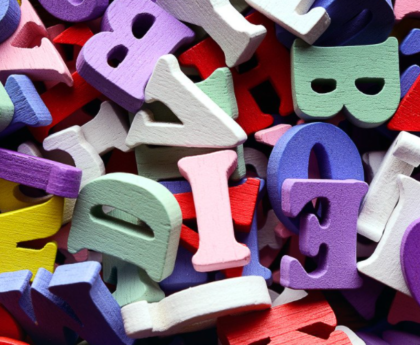Your five-year-old can sound out every word in a sentence perfectly. She reads ‘The cat sat on the mat’ without a single mistake. But when you ask where the cat was sitting, she stares blankly. She read the words, but she didn’t really understand the story. What’s missing? It could be background knowledge.
Reading isn’t just about decoding words on a page. It’s about making meaning from those words. And making meaning requires knowledge; knowledge about how the world works, what words mean, and how ideas connect. Your child might be able to decode ‘bug’ and ‘ate’ and ‘leaf,’ but if she doesn’t know what ‘ate’ means or has never seen a bug munching on a leaf, the sentence stays flat. It doesn’t create a picture in her mind.
This is why two children can read the same book and have completely different experiences. One child brings a wealth of knowledge to the page and understands deeply. The other child decodes accurately but struggles to comprehend. The difference isn’t reading ability but rather background knowledge.
Why Background Knowledge Matters for Young Readers
Think of background knowledge as the mental file cabinet your child uses to make sense of new information. When your child reads about a beach, she pulls from her mental files: sand feels gritty, waves make noise, seagulls fly overhead. These connections help her understand the text. Without those files, the words lose meaning.
Children with rich knowledge bases understand more of what they read. They make connections between ideas. They predict what might happen next. They remember details better because new information connects to what they already know.
Every conversation, every experience, every book you share adds to your child’s mental file cabinet. And that knowledge compounds over time, making future reading easier and more meaningful.
Four Practical Ways to Build Background Knowledge
Here are four specific examples of how to build background knowledge for your five or six-year-old reader. These aren’t complicated; they are simple ways to enrich your child’s understanding of the world through everyday experiences.
Example 1: The Farm Visit Connection
Let’s say your child is learning to read books about farms. Before you hand her that book, build her knowledge about farms. If possible, visit a real farm or petting zoo. Let her see chickens pecking at grain, cows chewing grass, and pigs rolling in mud. Talk about what farmers do. Explain that milk comes from cows and eggs come from chickens.
If you can’t visit a farm, watch short videos together showing farm animals and how farms work. Look at picture books about farms. Talk about the sounds animals make, what they eat, and where they sleep. Build that mental file before she ever tries to read the word “barn” or “tractor.”
When your child finally sits down with that farm book, she’s not starting from zero. She knows what a rooster looks like. She understands that hay is food for animals. The words on the page connect to real knowledge, and suddenly comprehension clicks.
Example 2: Weather and Seasons Exploration
Many early reader books talk about weather and seasons. Your child might read sentences like “The snow fell softly” or “The sun warmed the sand.” But these words only make sense if your child has experienced different types of weather.
Build weather knowledge through direct experience. On a rainy day, stand together at the window and watch raindrops race down the glass. Talk about how rain feels and sounds. On a hot summer day, discuss how the sun makes everything warm. In winter, if you have snow, let your child catch snowflakes and observe how they melt.
Create a simple weather chart together. Each morning, look outside and talk about what you see. Is it cloudy? Sunny? Windy? Rainy? Use descriptive words: drizzle, downpour, breeze, gust. These conversations build the knowledge your child needs when she encounters weather words in books.
Example 3: Kitchen Science Basics
Young readers often encounter books about cooking, baking, or food. Words like “stir,” “pour,” “mix,” and “melt” appear frequently. But if your child has never cracked an egg or watched butter melt in a pan, these words lack meaning.
Invite your child into the kitchen. Make pancakes together and let her pour milk into the bowl. Bake cookies and show her how mixing transforms separate ingredients into dough. Make ice cream and explain how cold makes a liquid turn solid. These hands-on experiences create powerful background knowledge.
When your child later reads “Mom stirred the batter,” she doesn’t have to guess what stirring means. She’s done it. She knows the circular motion, the sound of the spoon against the bowl, how ingredients combine. That book makes perfect sense because she has the knowledge foundation.
Example 4: Community Helpers and Places
Early readers learn about firefighters, doctors, mail carriers, and other community helpers. Books feature post offices, hospitals, fire stations, and libraries. But if your child has never been to these places or met these helpers, the books feel abstract.
Take field trips around your community. Visit the library and meet the librarian. Wave to mail carriers when they deliver packages. Drive past the fire station and talk about what firefighters do. Point out police officers and explain how they help keep people safe.
Read books about these community helpers before and after your visits. Talk about what each person does and why their job matters. When your child’s next book features a mail carrier delivering letters, she’ll understand the whole picture—not just the words on the page.
Build Knowledge Every Day
Background knowledge doesn’t require expensive programs or complicated lesson plans. It grows through everyday experiences, conversations, and exposure to the world. Talk to your child constantly. Explain what you’re doing and why. Answer their endless questions. Read diverse books that introduce new topics. Visit new places whenever possible.
Every experience adds to your child’s knowledge base. Every conversation builds vocabulary. Every book expands understanding. And all of it makes reading comprehension easier, stronger, and more meaningful.
Your child’s ability to decode words is just one piece of the reading puzzle. Background knowledge is the other essential piece. Build both, and watch your young reader flourish.
Ready to give your child systematic reading instruction that builds both decoding skills and comprehension? The Reading.com app teaches phonics, fluency, and comprehension through engaging, science-based lessons. Help your child become a strong reader with skills that last. Start your free 7-day trial today and support your reader’s growth.




